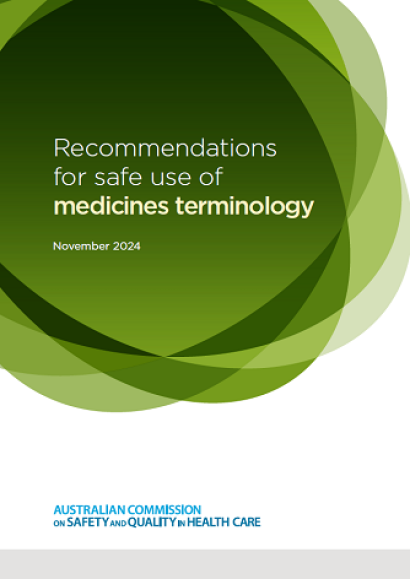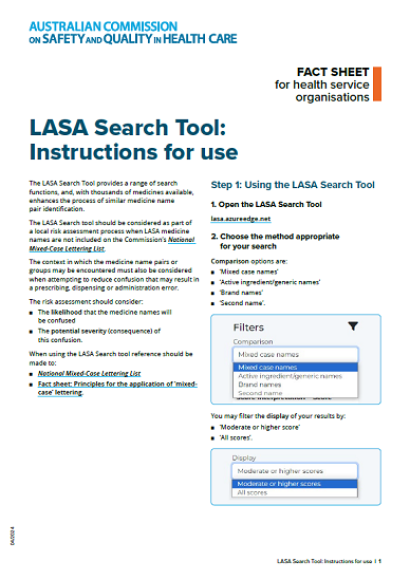In the acute sector in Australia, the ‘APINCHS’ acronym and classification assists clinicians to focus on a group of medicines known to be associated with high potential for medication-related harm.
High risk medicines (HRMs) are medications that have an increased risk of causing significant patient harm or death if they are misused or used in error.1
Safe and secure storage and distribution of medicines
Correct identification and procedure matching
The NIMC and PBS HMC are not intended for recording nutritional supplements.
‘Mixed-case’ lettering (also referred to as ‘Tall Man’ lettering) is a typographic technique that uses selective capitalisation to help make similar looking medicine names more easily distinguishable. The Commission developed and maintains a list of all current mixed-case lettering medicine names, as agreed and determined by the Commission’s Health Services Medication Expert Advisory Group.
The Commission is reviewing the Diagnostic Imaging Accreditation Scheme Standards to minimise the risk of harm and improve the care of patients.
The first step in delivering comprehensive care is undertaking a clinical assessment. Clinical assessment should be based on the patient’s subjective report of the symptoms and course of the illness or condition, and objective findings from clinical assessment to determine provisional and differential diagnoses.
Well-designed incident management systems assist patients, carers, families and the workforce to identify, report, manage and learn from incidents.
Now that you have considered how the selected PREM fits into the big picture of your organisation, it is time to think about how to translate the aspirations of this big picture into practical actions on the ground. Stage 2 takes you through some of the important decisions needed to get the PREM to your patients and to get responses back.


